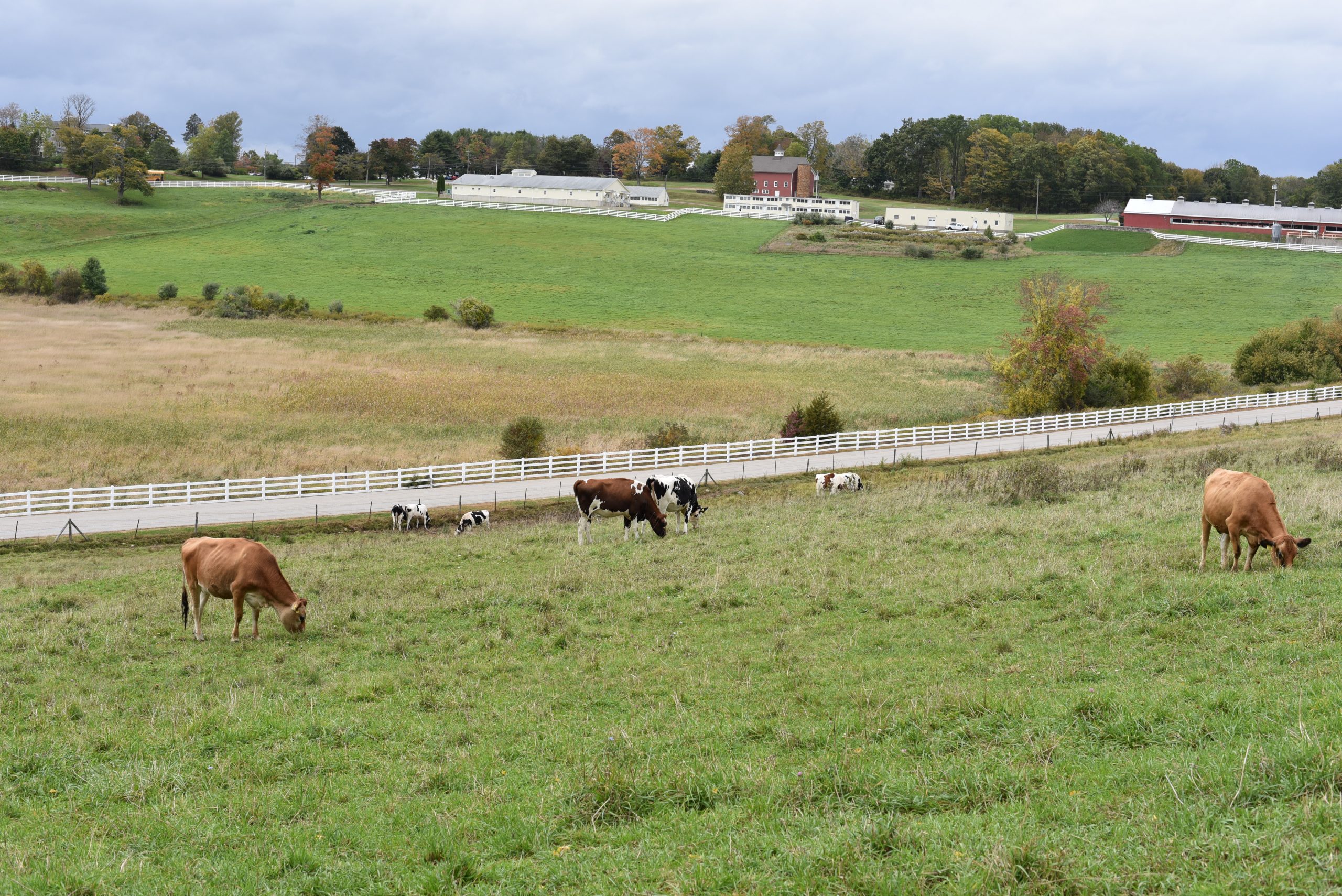With support from the Richard DelFavero Fund, Rigoberto Lopez, professor in the Department of Acultural and Resource Economics, and Chris Laughton, director of knowledge exchange at Farm Credit East, have compiled a report on the impact of COVID-19 on the Connecticut dairy farm sector.
The study was conducted at the request of UConn Extension, the Connecticut Farm Bureau and the Connecticut Department of Agriculture. According to the report, “The Connecticut dairy farm sector is expected to experience a $16.5 million loss in revenues due to the COVID-19 pandemic in 2020. This translates into a 19.4 percent decline in total farm revenue.” A pamphlet highlighting the major points of the report was also produced.
During a time of great need, a significant volume of dairy products was caught up in the production and distribution chain, unable to find their way to consumers. While grocery stores often had high demand but insufficient supply of some dairy products, distributors were frequently unable to provide adequate consumer packaged products. Most commercial food service outlets such as restaurants and schools were shut down, and these venues purchase dairy products differently than retail outlets. Processors were not able to shift gears quickly enough, and the farmers bore the brunt of losses. After farmers had endured five years of low milk prices, indicators pointed to an improved market in 2020 before the onset of the COVID-19 pandemic.
“In April, large dairy producers were forced to dump milk as they could not process and store the excess product accumulated due to the shutdown of food service outlets and schools,” Lopez explains. “There was a disconnect between demand and supply.” An example is the huge amount of cheese typically used by pizza restaurants that could not be offset by the higher-than-normal number of consumer purchases of small cheese packages sold by grocery stores.
“This pandemic caught the food supply chain somewhat unprepared, just like it took everyone by surprise,” Laughton points out. “Prior to COVID-19, the food distribution system was split almost fifty-fifty between people eating away from home and eating at home,” says Laughton. “Virtually overnight, we lost the entire food service market. A lot of that volume shifted to grocery stores, but the supply chain struggled to keep up. The packaging and distribution systems are different. Some of the product is different. When the packaging lines are set up a certain way, it takes time to shift over.”
Laughton continues, “Fortunately, things have adapted more quickly than I thought they might. The worst losses were in April and May, and shifts in how the product is processed and supplied, coupled with a gradual reopening of food services, have produced a tapering off of losses.”
One bright spot during this difficult time came through the effort of Agri-Mark Dairy Farms, which processes most of Connecticut’s milk. “Agri-Mark really stepped up, helping out with food banks,” Laughton remarks. “They’ve done a lot of processing runs just for food banks. Unfortunately, many of these food charity services are not set up to handle and store large volumes of fresh product. That has been a challenge as well.”
In order for the market to continue to improve, commercial and educational markets would have to reopen, and consumers must regain confidence in eating out and sending children to school. “This will be a gradual process,” Lopez says. “I don’t think we are going to go back to the old normal. The industry will have to adapt new strategies for packaging and consumer needs to serve the restructured market for dairy products.”
Laughton completed his MS degree in ARE in May 2020, with Lopez as his advisor. Lopez and Laughton, engaged Avery Bikerman, an undergraduate student in ARE, to help assemble data for the project and co-author the report. “These types of reports are timely and relevant, and students learn by doing,” Lopez says. “It’s part of their training to learn how to write reports for stakeholders and policy makers.”
Laughton worked closely with Bikerman and was impressed with his work ethic. “Avery really stepped up and exceeded our expectations for an undergraduate,” he says.
“We had to focus on applying a research-based approach,” says Bikerman “As a student fairly new to economics, this was my first opportunity to write a full economic report, learn the process and produce something meaningful.”
When asked if the dairy industry is better prepared for another COVID surge, Laughton says, “I think if it does happen in the fall, we won’t see dumping products. I think it will have a price effect at the wholesale markets just because the markets are sensitive to demand shifts, but we would be better prepared to move product. The peak of the shutdown was during the spring months of April and May, and it was at the same time as the peak of the dairy production when the cows are experiencing a “spring flush.”
He continues, “Another change that has occurred during the pandemic is a shift in consumer habits to home-based activities such as baking and gardening, while buying from markets close to home, which was a bonus for local businesses. This trend may persist and underscores the growing importance of local foods in foreseeable future.”



